Intelligent vehicle is a comprehensive system integrating environment sensing, planning decision-making, multi-level assisted driving and other functions. It uses computer, modern sensing, information fusion, communication, artificial intelligence and automatic control technology. It is a typical high-tech. Technical complex. At present, the research on intelligent vehicles is mainly aimed at improving the safety and comfort of automobiles and providing an excellent interface for people and vehicles. In recent years, smart vehicles have become the hotspot of research in the field of vehicle engineering in the world and the new driving force for the growth of the automobile industry. Many developed countries have incorporated them into their own intelligent transportation systems. From a concrete and realistic point of view, the more mature and predictable functions and systems of smart cars mainly include intelligent driving systems, life service systems, security protection systems, location service systems, and car service systems. It is mainly developed around these functional systems. Among them, each system actually includes some subdivided systems and functions. For example, the intelligent driving system is a big concept and one of the most complicated systems. It includes: intelligent sensing system, intelligent computer system, and assisted driving system. , intelligent public transport system, etc.; life service system includes audio and video entertainment, information inquiry and various types of biological services; and like the location service system, in addition to providing accurate vehicle positioning functions, but also to allow cars to be combined with other cars Realize automatic position intercommunication, so as to achieve the intended purpose of driving. Smart cars have the combined effect of these systems, which are equivalent to devices such as TV cameras, electronic computers and automatic control systems that house "eyes", "brains" and "foot". Smart car function structure diagram Through the vehicle-mounted sensing system, the smart car itself has active environmental awareness. In addition, it is also a core component of the Intelligent Transportation System (ITS). It is a node of the Internet of Vehicles system. It realizes people, cars, and vehicles through the vehicle information terminal. Wireless communication and information exchange between roads, the Internet, etc. Therefore, smart cars focus on computers, modern sensing, information fusion, pattern recognition, communication and automatic control technologies. It is a high-tech complex that integrates environmental awareness, planning decisions, and multi-level driving assistance. Dependent value chain, technology chain and industry chain. If the value of car networking in terms of car safety, energy saving and environmental protection is indirect and fundamental, then the core value of smart cars in improving driving safety and reducing driver burden is direct and obvious, and contributes to energy saving and Environmental protection. Studies have shown that in the early stages of smart cars, advanced smart driving assistance technology can help reduce road traffic safety accidents by 50% to 80%. In the ultimate stage of smart cars, that is, the driverless stage, it is even possible to completely avoid traffic accidents and liberate people from the driving process. This is also the most attractive value charm of smart cars. Intelligent technology systems generally consist of three key technologies: sensors, controllers, and actuators, including: 1) advanced sensing technologies, including detection using machine vision technology, such as laser ranging systems, infrared camera technology, and radar utilization ( Laser, centimeter wave, millimeter wave, ultrasonic) detects the vehicle ahead. 2) Communication technology (GPS, DSRC, 3G/4G), including the necessary technology for coordinated driving between several intelligent cars, vehicle-coordinated communication technology, and corresponding vehicle networking communication technology. 3) Lateral control, including the use of guiding cables, magnetic gas markers, machine vision technology, lateral control with radar reflective marking tape. 4) Longitudinal control, including longitudinal control of the distance of the workshop using laser radar, millimeter wave radar, machine vision technology, and longitudinal control of the vehicle queue using the workshop communication and the workshop distance radar. The Internet of Vehicles and Intelligent Transportation System (ITS) provide intelligent infrastructure, roads and network environment for smart cars. As the level of intelligent vehicles increases, it also requires the simultaneous development of vehicle networking and intelligent transportation systems. The industrial chain of smart cars can be described as follows: 1) The industrial chain of the Internet of Vehicles, including upstream component and chip manufacturing enterprises, mid-stream automobile manufacturers, equipment manufacturers and software platform developers, as well as downstream system integrators and communication service providers. , platform operators and content providers. 2) Advanced sensor manufacturers: develop and supply advanced machine vision technology, including laser ranging system, infrared camera, and radar (cm wave, millimeter wave, ultrasonic wave). 3) Automotive electronics suppliers: Automotive electronics suppliers that can provide intelligent driving technology research and development and integrated supply, such as Bosch, Delphi, and Denso. A smart car is a new type of high-tech car that is being developed. It doesn't require people to drive. People just sit comfortably in the car and enjoy the high-tech results. Because the car is equipped with a TV camera, an electronic computer, and an automatic control system equivalent to the "eyes", "brains" and "foot" of the car, these devices are equipped with very complicated computer programs, so this kind of device Cars can “thinkâ€, “judgeâ€, and “walk†like people, and can automatically start, accelerate, and brake, and can automatically bypass ground obstacles. In the case of complex and variable conditions, its "brain" can adapt to the situation and automatically select the best solution to command the car to run normally and smoothly. Unmanned smart cars will be an important symbol of the rapid development of automotive technology in the new century. Fortunately, smart cars have moved from idea to practice. With the rapid development of technology, I believe that in the near future, we can all appreciate the elegance of smart cars. Therefore, the smart car is actually a system composed of smart cars and intelligent highways. The conditions of the smart roads are not yet available, but they can be solved technically. Before the realization of the goal of smart cars, many assisted driving systems have actually appeared, which have been widely used in cars, such as smart wipers, which can automatically sense rain and rainfall, automatically turn on and off; automatic headlights, when there is insufficient light in the evening It can be automatically turned on; intelligent air conditioner controls the air volume and temperature of the air conditioner by detecting the temperature of the human skin; intelligent suspension, also called active suspension, automatically controls the suspension stroke according to the road surface condition, reduces bumps; prevents the doze system, monitors The driver's blinking situation to determine whether it is very tired, parking alarm if necessary... The wide application of computer technology provides a broad prospect for the intelligentization of automobiles. BMW once said: "We know more about the parameters of the car than the IT company, and it can ensure the safety of the car. You can allow the Apple phone to crash, but you must not allow the BMW to crash in the middle of the road. "This may reflect the different ideas of IT companies and auto companies. The former is able to achieve a good connection between the car and the cloud with strong back-end data, network technology, and intelligent software support; while auto companies consider vehicles more." Their practicality and safety, they "stick" to the advantages of the car itself. In August 2012, Google announced that its driverless car had been safely driven for 300,000 miles under the control of a computer. Google driverless cars rely on laser rangefinders, video cameras, in-vehicle radars, sensors, etc. to gain environmental awareness and recognition capabilities, ensuring that the route follows the pre-set routes of the Google Street View map. The device is expensive, and it costs about 300,000 US dollars. It is difficult to promote the application on a large scale, and its essence is in line with the technical characteristics of military smart cars. Unlike IT companies, Volvo, Audi, Mercedes-Benz, BMW, Toyota, Nissan, Ford and other auto giants have chosen a more practical civilian smart car technology route. In terms of technical devices, conventional radar (centrometer wave, millimeter wave, ultrasonic wave), camera (stereo, color, infrared), sensors (radar, laser, ultrasonic), camera, etc. are used for environment perception and recognition through vehicle network-based Collaborative assisted driving technology for intelligent information interaction, combined with GPS navigation to achieve path planning, and more attention to the development of mechatronic system dynamics and control technology, low cost, easy to promote large-scale applications. The first two levels of "assisted driving technology" and "semi-automatic driving technology" of smart cars have been widely used and become an important means to improve product quality and market competitiveness. The first-level assisted driving technology of the smart car includes two types: autonomous assisted driving technology and cooperative assisted driving technology. The warning is to prevent the driver from taking a car accident. Among them, autonomous assisted driving technology including frontal collision warning (FCW), lane departure warning (LDW), lane keeping system (LKS), automatic parking assistance (APA), etc., has been widely used and is in the popularization stage. And the luxury car sinks to the B-class car. Car-assisted driving technology is a necessary condition for acquiring E-NCAP four stars and five stars. In the developed countries and regions of the United States, Europe, Japan and other countries, the coordinated assisted driving technology based on the vehicle network V2I/V2V technology is undergoing practical technology development and large-scale test field testing. Semi-automatic driving technology is gaining popularity in high-end vehicles, such as the adaptive cruise control system (ACC), which has been widely used. The world's auto giants are working on the practical development and industrialization of the third level of "high-automatic driving technology", and will soon launch mass production. Volvo will be the first to mass produce the world's first automatic driving technology - traffic jam assist system. The system is an integrated and extended adaptive cruise control and lane keeping assist system that allows the car to automatically follow the vehicle ahead when the traffic speed is below 50 km/h. In addition, Audi, Cadillac, Nissan, Toyota and other plans to introduce cars such as automatic steering, acceleration and deceleration, lane guidance, automatic parking, adaptive cruise control, etc., most of which belong to the third level of intelligent driving technology. Since the V2X technology of the Internet of Vehicles covers many industries such as automobile, IT, transportation, communication, etc., the relevant technical standards and regulations are still not perfect, and the coordinated assisted driving technology has not yet been widely promoted and applied. Google driverless cars are also inseparable from human control. They can only travel according to predetermined procedures, and they will be disturbed in foggy weather, and they will not be well connected during acceleration, deceleration and steering. In short, the all-wheel drive technology is still in the research and development stage, and the final practical test and verification will take a long time. Smart cars will dramatically reduce traffic safety incidents. Car traffic accidents depend to a large extent on human factors. Driverless cars are precisely controlled by driving computers, which can effectively reduce traffic accidents caused by traffic accidents such as drunk driving, fatigue driving, and speeding. Smart cars will increase vehicle utilization, reduce total vehicle sales, and reduce vehicle pollution to the environment. According to the statistics of the Google driverless car team, traditional cars are idle for most of the time (96%) and have low utilization. Driverless cars can be used by people in need in chronological order, so it is better to coordinate the use of vehicles in the home, improve the efficiency of vehicle use, reduce the total consumption of vehicles, and effectively reduce carbon emissions. On the other hand, smart cars can automatically select the optimal path to the destination based on real-time road conditions, with less energy consumption. Smart cars will change the current state of automobile transportation infrastructure and affect the development of automobile transportation related industries. The operation of smart cars requires a matching transportation infrastructure, and the current infrastructure construction will no longer apply. For example, since the driverless car senses the road surface obstacle by the sensor or communicates with the road facility through the 4G/DSRC, it is necessary to arrange the guiding cable, the magnetic gas marker column, the radar reflective marker, the sensor, and the like at the intersection, the road side, the curve, and the like. Communication facilities, etc. Queue driving is another form of smart car, that is, a manned pilot vehicle followed by an unmanned vehicle formation, this technology will increase the automation of car transportation. The Institute of Electrical and Electronics Engineers (IEEE) predicts that by the middle of this century, driverless cars will account for 75% of the world's car ownership, and the concept of car transportation systems will change. Traffic rules and infrastructure will follow. The emergence of a car has changed dramatically, and smart cars may subvert the current mode of operation of the car transportation industry. IHS, a well-known consulting organization in the automotive industry, issued a forecast report saying that “the unmanned smart car is realized through a computer systemâ€, and its development speed is catching up with pure electric vehicles. It will enter the homes of ordinary people around 2025, and the sales volume will reach 1180 in 2035. Ten thousand vehicles accounted for 9% of the total global automotive market sales in the same period. The driverless cars that were seen in sci-fi movies in the past seem to be getting closer to our real life. With the development of smart car electronic technology, automotive intelligent technology is gradually being applied. This technology makes the operation of the car more and more simple, the power and economy are getting higher and higher, and the driving safety is getting better and better. If the electronic car of smart cars is defined as the era of functional machines, then car intelligence will enter the era of smart phones. The automotive industry is facing innovation and the trend of intelligence is obvious. In recent years, the automobile industry has undergone earth-shaking changes. Cars are no longer only used as a basic means of transportation. With the strategic deployment of automobile manufacturing in China Manufacturing 2025 and the age structure of the main consumer groups, people are car The appeals and definitions are broader, interactive, intelligent and convenient, which have evolved into the label of cars in the new era. The era of industrial 4.0 automotive intelligence has arrived. At present, the first two levels of "assisted driving technology" and "semi-automatic driving technology" of smart cars have been widely used and become an important means to improve product quality and market competitiveness. The world's auto giants are working on the third level "height". The practical research and development and industrialization of the "automatic driving technology" will soon be launched in mass production. Volvo will be the first to mass produce the world's first automatic driving technology - traffic jam assist system. The system is an integrated and extended adaptive cruise control and lane keeping assist system that allows the car to automatically follow the vehicle ahead when the traffic speed is below 50 km/h. In addition, Audi, Cadillac, Nissan, Toyota and other plans to introduce cars such as automatic steering, acceleration and deceleration, lane guidance, automatic parking, adaptive cruise control, etc., most of which belong to the third level of intelligent driving technology. Wall Switch And Socket,Wireless Wall Switch,Decora Light Switch,Push Button Light Switch ZHEJIANG HUAYAN ELECTRIC CO.,LTD , https://www.huayanelectric.com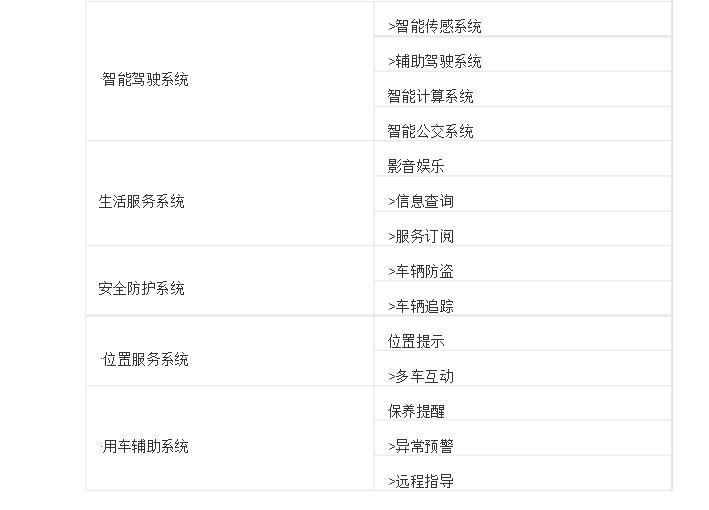
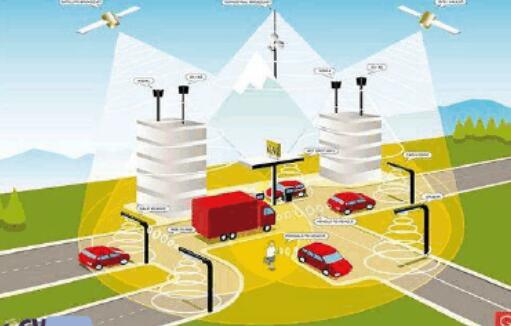
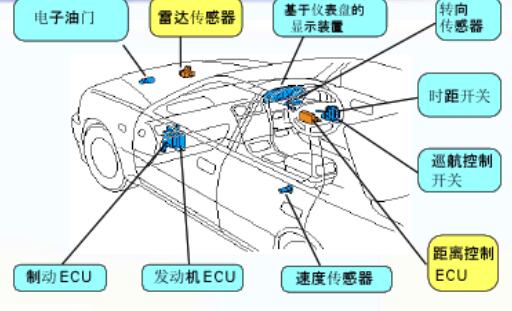
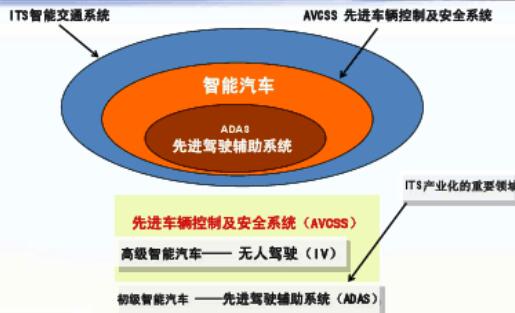
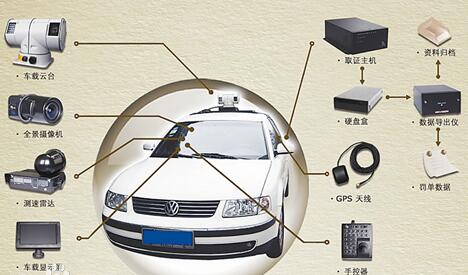
Analysis on the status quo and prospect of smart car technology development
Smart car introduction